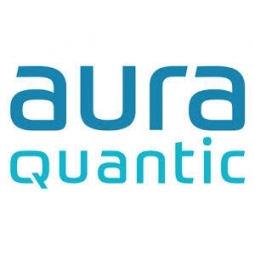Technology Category
- Analytics & Modeling - Real Time Analytics
- Cybersecurity & Privacy - Security Compliance
Applicable Industries
- Cities & Municipalities
- Finance & Insurance
Applicable Functions
- Procurement
- Quality Assurance
Use Cases
- Inventory Management
- Real-Time Location System (RTLS)
Services
- System Integration
About The Customer
New Millennia Group Ltd. is a company that operates within the £28 billion per annum United Kingdom Temporary Recruitment Industry. The company has been working within this industry since 2000 and holds both trade body and government licenses to operate. It provides invoice funding, credit insurance, payroll, and administration facilities to recruitment agencies operating nationwide. New Millennia's main objective is to provide efficient and expert financial, legal, and administrative services to help temporary employment agencies and end customers grow and succeed with their business plans.
The Challenge
New Millennia Group Ltd., a company operating within the £28 billion per annum United Kingdom Temporary Recruitment Industry, faced significant challenges in managing its administrative processes. The company provides invoice funding, credit insurance, payroll, and administration facilities to recruitment agencies nationwide. However, the administration processes and government compliance issues were complex and susceptible to several major changes each year. From 2000 to 2010, New Millennia used several disparate software packages interconnected via manual paper systems, leading to operational headaches. The main challenges included operational process speed and security, communication between operational processes, external interaction of operational processes, supply chain system integrations, frequent change of operational processes, real-time information management, and mountains of paperwork.
The Solution
In 2010, New Millennia decided to implement an automated and centralized control of the services they were providing their clients. The company needed a system that could integrate with their client's applications, comply with legal regulations and controls in the recruitment field, and optimize resources while minimizing costs. After an extensive investigation, New Millennia opted for AuraQuantic BPM Process Management Platform in November 2010. The platform was chosen for its ability to build any process without the need for programming, enabling agencies, temp workers, and end clients to work online via their individual Portals and interact with the AuraQuantic processes. It also provided a high degree of security for protecting confidential information and a real-time information management system.
Operational Impact
Quantitative Benefit

Case Study missing?
Start adding your own!
Register with your work email and create a new case study profile for your business.
Related Case Studies.

Case Study
Turning A Stadium Into A Smart Building
Honeywell created what it called the “intelligent system” for the National Stadium in Beijing, China, turning the venue for the opening and closing events at the 2008 Summer Olympics into a “smart building.” Designed by highly controversial artist Ai Weiwei, the “Bird’s Nest” remains one of the most impressive feats of stadium architecture in the world. The 250,000 square meter structure housed more than 100,000 athletes and spectators at a time. To accommodate such capacity, China turned to Honeywell’s EBI Integrated Building Management System to create an integrated “intelligent system” for improved building security, safety and energy efficiency.
.png)
Case Study
Smart Street Light Network (Copenhagen)
Key stakeholders are taking a comprehensive approach to rethinking smart city innovation. City leaders have collaborated through partnerships involving government, research institutions and solution providers. The Copenhagen Solutions Lab is one of the leading organizations at the forefront of this movement. By bringing together manufacturers with municipal buyers, the Copenhagen Solutions Lab has catalyzed the development and deployment of next-generation smart city innovations. Copenhagen is leveraging this unique approach to accelerate the implementation of smart city solutions. One of the primary focus areas is LED street lighting.

Case Study
Buoy Status Monitoring with LoRa
The Netherlands are well-known for their inland waterways, canals, sluices and of course port activities. The Dutch Ministry of Infrastructure indicates that there are thousands of buoys and fixed items in and near water environments that would profit from IoT monitoring. One of the problems with buoys for example, is that they get hit by ships and the anchor cable breaks. Without connectivity, it takes quite some time to find out that something has happened with that buoy. Not to mention the costs of renting a boat to go to the buoy to fix it. Another important issue, is that there is no real-time monitoring of the buoys at this moment. Only by physically visiting the object on the water, one gains insight in its status.

Case Study
Barcelona Case Study
Barcelona’s heavy traffic and its associated high levels of pollution were the primary factors that motivated some companies and universities to work on strategies for improving traffic in the city centre. Bitcarrier is one of the technologies involved in the In4Mo Project, whose main objective is to develop the applications that form the core of smart mobility, one of the fundamental pillars of the smart city concept.

Case Study
China Mobile Smart Parking
Smart Parking, powered by NB-IoT technology, is making it easier for drivers to find free parking spots. Cities can better manage their parking assets and maximize the revenue available to them as a result. Drivers searching for parking create congestion and pollution by circling and hunting for available parking. Smart Parking services are able to significantly ease these problems by guiding a driver directly to a parking space.








